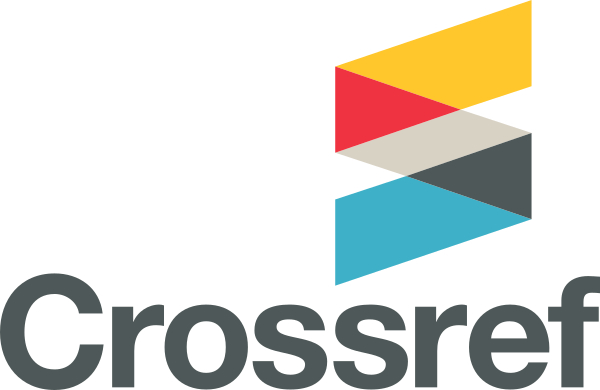JSER Policies
JSER Online
JSER Data
Frequency: quarterly
ISSN: 1409-6099 (Print)
ISSN: 1857-663X (Online)
Authors Info
- Read: 16952
How To Write a Journal Article Submission Cover Letter
Key Points Summary
- Always submit an accompanying cover letter with every manuscript.
- Some journals have very specific requirements for information to provide in the cover letter, and these are usually stated in the journal’s instructions to authors. Make sure your cover letter includes any journal-required elements.
- Strong cover letters tell journal editors why they should publish your manuscript in their journals.
- Cover letters should be succinct and focus on the importance and novelty of your findings, as well as how they relate to the scope of your target journal.
After the hard work of perfecting your manuscript and selecting a target journal, one more task remains before submission: writing a cover letter. The cover letter is an important document that must do more than tell the editor that you are submitting your manuscript for consideration. It should capture the editor’s attention, provide information about the novelty and importance of your findings, and indicate that all authors have approved of the submission and the manuscript has not been submitted to more than one journal concurrently.
Strong cover letters not only introduce your manuscript – they offer an important opportunity to convince journal editors to consider your manuscript for publication.
Determine Your Target Journal’s Requirements
Before you begin, check your target journal’s author instructions for any cover letter requirements, such as certain specifically worded statements. No matter what else you decide to include, always make sure that your cover letter contains any required information and statements described in your target journal’s author instructions.
Develop an Outline for the Cover Letter
In addition to any information and statements required by your target journal, every cover letter should contain the following elements:
- An introduction stating the title of the manuscript and the journal to which you are submitting.
- The reason why your study is important and relevant to the journal’s readership or field.
- The question your research answers.
- Your major experimental results and overall findings.
- The most important conclusions that can be drawn from your research.
- A statement that the manuscript has not been published and is not under consideration for publication in any other journal
- A statement that all authors approved the manuscript and its submission to the journal.
- Any other details that will encourage the editor to send your manuscript for review.
Write one or more sentences to address each of these points. You will revise and polish these sentences to complete your cover letter.
Write the Body of the Cover Letter
Open your cover letter with a sentence or two explaining why you are writing, the title of your manuscript, and the title of the journal.
- Example: “I am writing to submit our manuscript entitled, “Taking antioxidants plus zinc reduces the risk of advanced age-related macular degeneration for high-risk patients,” for consideration for publication in Journal of Special Education and Rehabilitation.”
Briefly state the background for the problem or question your research answers. The focus of the paragraph is to explain why your research was needed and clearly state the question your research answers. Clearly and concisely explain your results, findings, and conclusions.
To keep your cover letter concise, limit this explanation to one or two brief paragraphs. You can also include a sentence or two that links your findings to the interests of the journal’s readership, if appropriate. It may be helpful to review your abstract to stay focused on your most important results and conclusions.
- Example: “Because our findings could be applied in the clinic right away, they are likely to be of great interest to the vision scientists, researchers, clinicians, and trainees who read your journal.”
As you write this explanation, think in terms of “how will my manuscript benefit the journal?” The journal editor’s goal is to publish important, novel findings that are within the journal’s scope and of interest to its readership. Your goal is to show the editor how your manuscript meets these criteria. Such manuscripts will be highly referenced, which will increase the impact factor of the journal. Without exaggerating, explain the novelty, relevance, and interest of your findings to researchers who read that journal.
After describing your research and findings, include a paragraph with any journal-required statements. If the findings in the manuscript have been presented at a scientific meeting, include that information in this paragraph. This paragraph should also include statements about exclusivity and author approval for submission.
- Example: “This manuscript describes original work and is not under consideration by any other journal. All authors approved the manuscript and this submission.”
In your last paragraph, thank the editor for his or her consideration.
- Example: “Thank you for receiving our manuscript and considering it for review. We appreciate your time and look forward to your response.”
Add Basic Letter Elements
Cover letters follow the same simple format as all letters. Make sure your cover letter includes the following basic letter elements:
- Date.
- Addressee name and mailing address.
- Salutation (such as “Dear Dr. Smith:” or “Dear Editor:”).
- Body of the letter.
- Closing (such as “Kind regards,” or “Thank you,”).
- Signature block (author’s signature, typed name and highest degree, institution, and mailing address).
- Enclosure designation (“Enclosure” to indicate your manuscript is included with the cover letter).
Cover letters are often submitted electronically in an e-mail message. E-mail cover letters may not contain more formal letter elements like the date and address block.
Revise the Cover Letter
Read through your cover letter several times to proofread and revise the text for clarity and brevity. Remove any stray points or sentences that do not directly relate to the purpose, major results, and most important findings and conclusions of your study. As you revise the cover letter, ask yourself if the impact, novelty, and relevance of your findings are clear. Rewrite any sentences that are very long, do not make your point clearly, or are cluttered with too many details.
Cover letters should not exceed one page unless absolutely necessary. If you write a cover letter that is longer than one page, think carefully about how it can be shortened.
As you revise the cover letter, proofread for the same basic grammar and construction issues you would look for when revising your manuscript.
- Eliminate unnecessary or redundant phrases like “in order to” and “may have the potential to.”
- Make sure the letter is written in plain English. Remove any jargon and define all abbreviations at first use.
- Proofread for spelling and grammar errors.
During your review, read the cover letter at least once to ensure you avoid the following:
- Statements that exaggerate or overstate results
- Conclusions that are not supported by the data reported in the manuscript.
- Sentences repeated word-for-word from the manuscript text.
- Too many technical details.
Always complete a final check to confirm that your cover letter includes all elements required by your target journal.
EXAMPLE
Faculty of Education and Rehabilitation Sciences, Department of Inclusive Education and Reahbailitation
University of Zagreb
Zagreb, 10000
Croatia
18.02.2015.
Prof. Dr. Vladimir Trajkovski
Journal of Special Education and Rehabilitation
Faculty of Philosophy
University "Ss. Cyril and Methodius"
Goce Delchev 9A
1000 Skopje, Republic of Macedonia
Dear Dr. Trajkovski
Please find enclosed a manuscript entitled: " The Experience of Bullying in Schools in Children with Attention Deficit/Hyperactivity Disorder (ADHD): A Correlation Between Victimization and Bullying" . The paper demonstrates significant finding about victimisation and bullying in children with ADHD disorder. As such this paper should be of interest to a broad readership including those interested in socioemotional competencies as well as those interested in ADHD disorder.
Thank you for your consideration of my work! Please address all correspondence concerning this manuscript to me and feel free to correspond with me by e-mail (cvitkovic.daniela@gmail.com).
Sincerely,
Daniela Cvitković
Share Us
Journal metrics
-
 SNIP 0.059
SNIP 0.059 -
 IPP 0.07
IPP 0.07 -
 SJR 0.13
SJR 0.13 -
 h5-index 7
h5-index 7 -
 Google-based impact factor: 0.68
Google-based impact factor: 0.68
10 Most Read Articles
- PARENTAL ACCEPTANCE / REJECTION AND EMOTIONAL INTELLIGENCE AMONG ADOLESCENTS WITH AND WITHOUT DELINQUENT BEHAVIOR
- RELATIONSHIP BETWEEN LIFE BUILDING SKILLS AND SOCIAL ADJUSTMENT OF STUDENTS WITH HEARING IMPAIRMENT: IMPLICATIONS FOR COUNSELING
- EXPERIENCES FROM THE EDUCATIONAL SYSTEM – NARRATIVES OF PARENTS WITH CHILDREN WITH DISABILITIES IN CROATIA
- INOVATIONS IN THERAPY OF AUTISM
- AUTISM AND TUBEROUS SCLEROSIS
- THE DURATION AND PHASES OF QUALITATIVE RESEARCH
- REHABILITATION OF PERSONS WITH CEREBRAL PALSY
- DISORDERED ATTENTION AS NEUROPSYCHOLOGICAL COGNITIVE DISFUNCTION
- HYPERACTIVE CHILD`S DISTURBED ATTENTION AS THE MOST COMMON CAUSE FOR LIGHT FORMS OF MENTAL DEFICIENCY
- DIAGNOSTIC AND TREATMENT OPTIONS IN AUTISTIC SPECTRUM DISORDERS – AN OVERVIEW
















